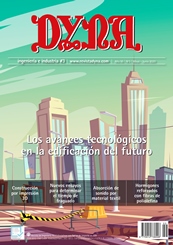A NEW IDENTIFICATION METHOD OF THE TRANSFORMER INRUSH CURRENT BASED ON IMPROVED HILBERT-HUANG TRANSFORM ALGORITHM
Keywords:
Hilbert-Huang transform, Inrush current, Internal fault current, Instantaneous frequency, Transformada Hilbert-Huang, Corriente de arranque, Corriente de fallo interno, Frecuencia instantáneaAbstract
As the main form of protection for transformers, differential protection requires correct operation because it directly influences the safe operation of transformers. Meanwhile, transformer inrush current is an important factor in the tendency of transformers to malfunction. To accurately and reliably discriminate inrush current from internal fault current, this study proposed a novel method based on the Hilbert–Huang transform (HHT) algorithm. We integrated the empirical mode decomposition (EMD) algorithm with the permutation entropy (PE) algorithm and put forward a new algorithm named modified ensemble EMD. First, the original current signal was added to an opposite white noise signal with several repetitions for the EMD. Next, PE was employed to detect the decomposition results, where the noise, intermittent, and high-frequency signals with relatively large entropies were removed from the original signal. The remainder of the signal was decomposed by the second EMD to obtain a group of approximately stationary intrinsic mode munction (IMF) signals. Finally, the first IMF signal was extracted for HHT to obtain an instantaneous frequency, and the transformer inrush current and internal fault current were accurately identified by the time intervals between two adjacent catastrophe points in the instantaneous frequency. Results demonstrated that the time intervals between two adjacent catastrophe points in the instantaneous frequency of the transformer inrush current were less than 14 ms and that of various internal faults (i.e., turn-to-turn, single-phase, phase-to-phase, and three-phase faults) were approximately 20 ms. Results indicate that the inrush current and internal fault current are correctly, reliably, and quickly identified by the time intervals between two adjacent catastrophe points in the instantaneous frequency. The time intervals of the catastrophe points in the instantaneous frequency of the inrush current under different closing initial phase angles (0°, 30°, …, 330°) are less than 12.5 ms, indicating that the method is unaffected by the dead angle of the inrush current, closing initial phase angle, and non-periodic components. The proposed method provides references for identifying inrush current with regard to transformer differential protection. Keywords: Hilbert–Huang transform, Inrush current, Internal fault current, Instantaneous frequencyDownloads
Published
2020-05-01
Issue
Section
ARTICULOS

